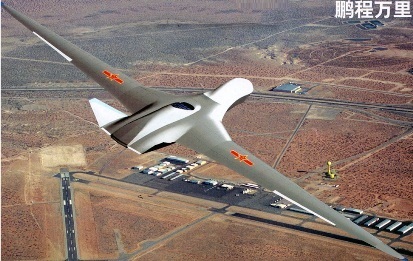 An opinion piece.
An opinion piece.
ForeignPolicy.com has a very good article on unmanned systems (there is a registration wall, but it’s free). Written by Michael C. Horowitz, Associate Professor at the University of Pennsylvania, The Looming Robotics Gap is full of interesting facts and figures. The only problem with the article is that its central premise – the United States military is in immediate danger of losing its technological edge – is a load of hooey.
Let’s review what I liked about the article. Professor Horowitz has collected a lot of good marketing data, such as:
- “… companies such as Google have set their sights on developing consumer robotics to serve and fuel an international market that some estimate will generate$6.5 billion in sales a year by 2017. Combined with an industrial robotics market projected to reach $37 billion in annual sales by 2018…”
- “According to a recent study by research firm Global Industry Analysts, annual spending worldwide on military robotics will rise from $5.6 billion in 2012 to $7.5 billion by 2018…The Teal Group, a U.S. consulting company, speculated in 2013 that global spending on drones — military and civilian — could cumulatively reach $89 billion over the next 10 years.”
- “Global Industry Analysts reports that spending on military robotics in Asia will increase 67 percent, to almost $2.4 billion a year, by 2018, making it the fastest-growing segment of that market.”
- “Even in areas such as agriculture, the demand for robotics is growing, with a report by WinterGreen Research suggesting that the market will reach $16.3 billion by 2020.”
If the article is so well researched, what’s my problem with it? The author’s analysis. I actually agree with most of his contentions. It’s just that he frames every fact as cause for alarm.
The article begins with a description of a Chinese Unmanned Aerial Vehicle (UAV) at the 2013 Paris Air Show, which “…shocked the audience because it looked just like the Reaper, the most advanced armed drone currently deployed by the U.S. military. And, according to the Chinese, it has the strike capabilities to match…”
Firstly, I would be a lot more worried if the audience was “shocked” that the US had unveiled an UAV that was an obvious copy of superior Chinese technology. Secondly, while only a fool would underestimate the Chinese, their claims about their military and technologically capabilities have always been greeted by Western analysts with what may be described as “polite skepticism.” When reading American reports of Chinese weapon systems, the restrained snark practically drips off the pages.
Another example of the author’s doomsday-ism: “Washington has led the field of military robotics because of the strength of investments made over the past two decades. But if it doesn’t keep up, the United States could find itself facing that most dreaded of strategic boogeymen: a ‘gap’ — a robotics gap.”
Even with the recent decrease in unmanned spending, does anyone really think that the US will do nothing? This is a tried and true tactic, used by Defense spending advocates since time immemorial, i.e. assume that we will not progress, and then compare the adversary’s future military with our current one. This was done by Kennedy, Reagan – really almost by every US administration.
“Wait a minute!” you say. “Isn’t government spending on unmanned spending actually decreasing?” Professor Horowitz writes, “The United States is currently the world’s leader in military robotics, deploying some 11,000 UAVs and over 12,000 ground robots. But the Defense Department’s investment in such technology is projected to drop more than 33 percent this year.”
As I wrote in Unmanned Systems Integrated Roadmap: What does it mean?, “…a single year’s budget, as quoted above, may be misleading. Unmanned budgets are expected to increase after 2014. Also, procurement is a long, arduous process, in which multi-years total may be more significant than a single year’s allocation. Consider the funding over the next 4 years for UGVs.”
“$223.9 million dollars over a 4 year period sounds a lot more promising than the $13 million budgeted just for 2014.”
Professor Horowitz makes an excellent point about the how the pilot-dominated culture of the Air Force is limiting unmanned applications. He is also correct that our current overwhelming military dominance has created a legacy of old-fashion weapon systems that makes it institutionally difficult to upgrade to newer technologies. However, neither of these problems is unsolvable, or even new.
More than any other country in the world, the United States is in a best position economically, technologically, and politically to dominate unmanned systems in the immediate future. It’s not that we couldn’t lose our superiority; it’s just that maintaining our technological supremacy is just one of many challenges. If we lose the next war, it is just as likely, if not more likely, that it will be for political and/or economic reasons, not lack of technological superiority.
Professor Horowitz could be right; the future of unmanned systems may not be American, but I wouldn’t bet on it.










